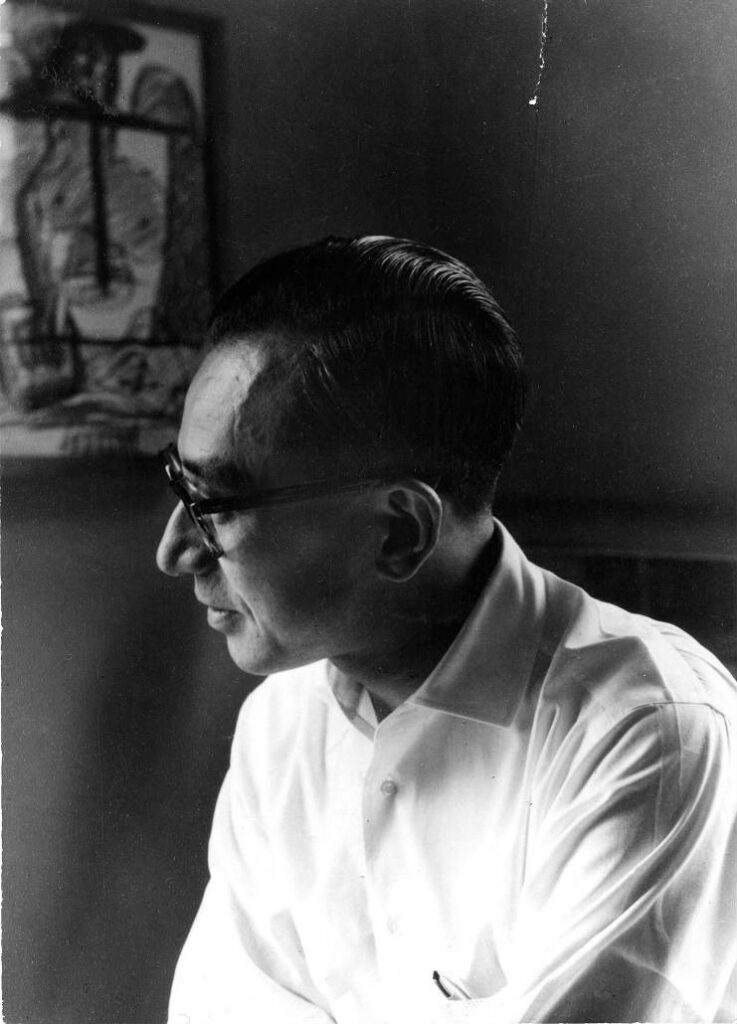
Junzo Sakakura
Sakakura was a Japanese architect. Born in Gifu Prefecture, he lived primarily in Tokyo, where he set up a practice in 1940. His studies in Art History at the Tokyo Imperial University (1923–1927) were followed by a two-year course in construction that prepared him for a career in Le Corbusier’s Paris workshop, which lasted over five years. He visited Paris again in 1937 for the fifth meeting of the International Congress of Modern Architecture (Congrès internationaux d’architecture moderne—CIAM) and to design the prize-winning Japanese Pavilion for that year’s International Exposition. With his country at war, and few resources available at home, Sakakura committed himself to researching prefabrication in housing, and designed a residential plan for a Manchurian town in 1940. Influenced by Jean Prouvé, he operated the National Institution for the Wartime Construction of Prefabricated Architecture between 1942 and 1945. His first major commission, realized in 1951, was Kamakura’s Museum of Modern Art. The building is a Corbusian prism raised over a pond on stilts, signifying a respect for tradition—something Sakakura’s Bamboo Chair (1949) had already demonstrated. From the late 1950s on he designed a number of projects for town halls, train stations, and urban plazas. Sakakura’s status as director of the Japanese exhibitions at Milan Triennale from 1957 to 1960, coupled with his role as a consultant in the planning of Osaka’s Expo ’70 just prior to his death, secured his reputation as one of the giants of architectural modernism in Japan.

